From the top of the
tower at the eastern end of the Charles Bridge, you
can look over the roofs of the New Town and see the modern city in the
background. These pictures were taken over a two day
period. My hotel
was located in the southwest corner of the New Town, so I will
start
the tour there and work counterclockwise from there.
|
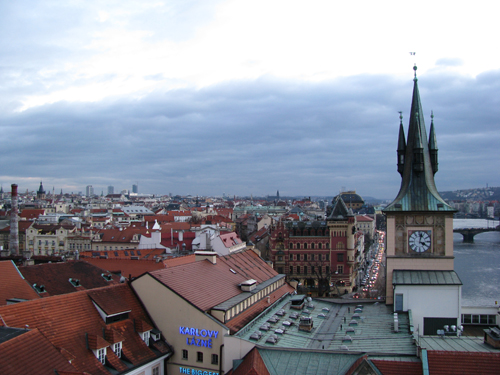 |
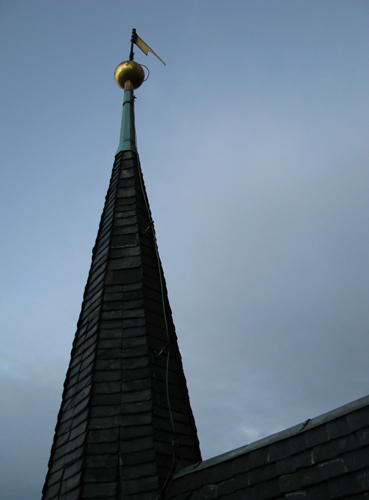 |
Charles
Square
|
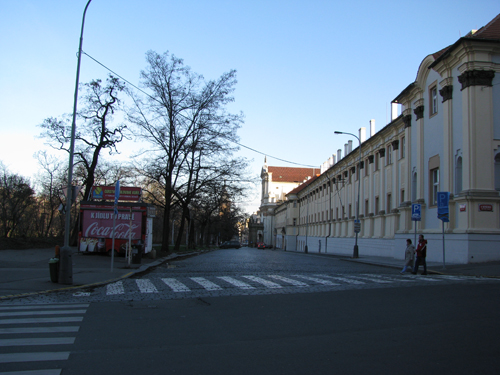 |
One block east of my hotel was
Charles Square (Left). Since the mid-19th century the square has
been a park. Though surrounded by busy roads, it is a pleasant
place to sit and read or watch people, except during the winter when I
was there when it was deserted except for the multitude of statues and
all but the most hardy of the beggars. The square began life as a
vast cattle market, when Charles IV founded the New Town in 1348.
Other goods sold in the square included firewood, coal and pickled
herring. In the centre of the market Charles had a wooden tower
built, where the coronation jewels were put on display once a
year. In 1382 the tower was replaced by a chapel, from which, in
1437, concessions made to the Hussites by the pope at the Council of
Basle were read out to the populace.
Faust House (Below Right). Prague thrives on legends of alchemy
and pacts with the devil, and this Baroque mansion has attracted
many. There has been a house here since the 14th century when it
belonged to Prince Vaclav of Opava, an alchemist and natural
historian. In the 16th century it was owned by the alchemist
Edward Kelley. The Chemical experiments of Count Ferdinand
Mladota of Solopysky, who owned the house in the mid 18th-century, gave
rise to its association with the legend of Faust.
|
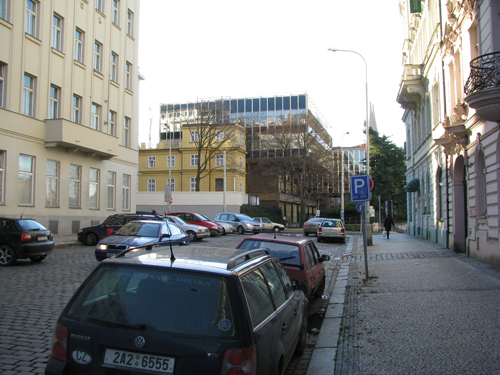
|
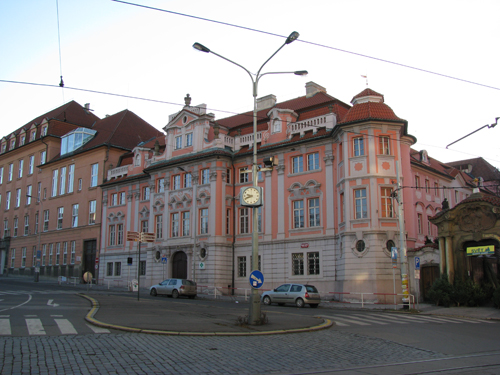 |
Just
behind Faust House is the Church of St John on the Rock (Below
Left). One of
Prague's smaller Baroque churches, St John on the Rock is one of
Kilian Ignaz Dientzenhofer's most daring designs. Its twin square
towers are set at a sharp angle to the church's narrow facade and the
interior is based on an octagonal floor plan. The church was
completed in 1738, but the double staircase leading up to the west
front was not added until the 1770s. On the high altar there is a
wooden version of Jan Brokof's stature of St John Nepomuk which stands
on the Charles Bridge.
On the wall in front of the church you can see both the past grandeur
and modern neglect that marks the entire city. My overall
impression of Prague was of a city with a rich history, a poor present,
but with abiding optimism for the future.
|
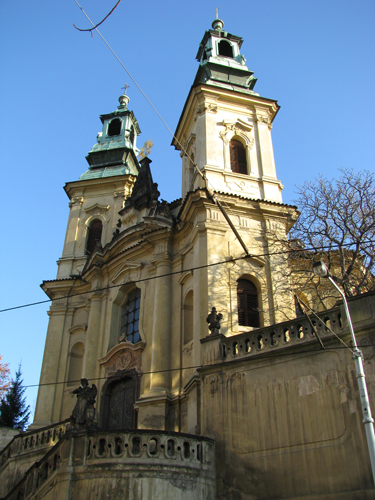 |
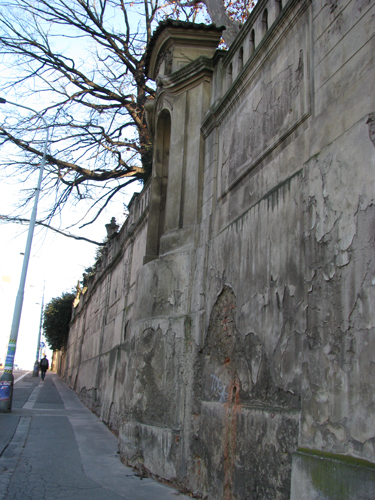 |
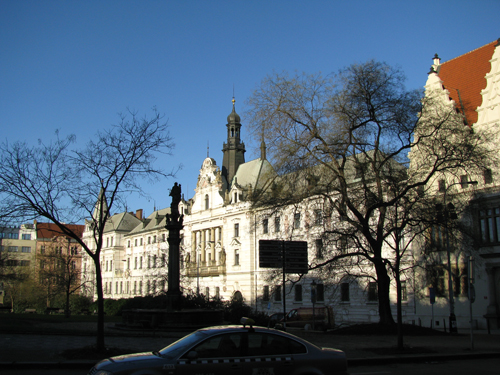 |
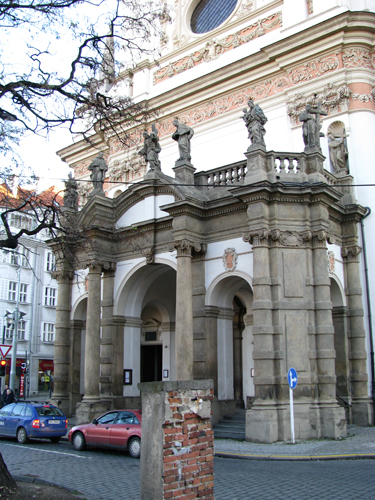 |
Around the
remainder of Charles Square stands the Jesuit College (Above Left), the
Church of St Ignatius (Above Right), and the New Town Hall (Right).
The former Jesuit college occupies half of the eastern side of Charles
Square. As in other parts of Prague, the Jesuits were able to
demolish huge swathes of the city to put up another bastion of their
formidable education system. The college was built between 1656
and 1702 by Carlo Lurago and Paul Ignaz Bayer. The two sculptured
portals were the work of Johann Georg Wirch who extended the building
in 1770. After the suppression of the Jesuit order in 1773 the
college was converted into a military hospital. It is now a
teaching hospital and part of Charles University.
With its wealth of gilding and flamboyant stucco decoration, St
Ignatius is typical of the Baroque churches built by the Jesuits to
impress people with the power and glamour of their faith. The
architects were the same two men responsible for the adjoining Jesuit
College. Work started on the church in 1665 and Paul Ignaz Bayer
added the tower in 1687. The Jesuits continued to embellish the
interior right up until the suppression of their order in 1773, adding
stucco work and statues of Jesuit and Czech saints.
In 1960 a statue of Hussite preacher Jan Zelivsky was unveiled at the
New Town Hall. It commemorates the first and bloodiest of many
demonstrations. On 30 July 1419 Zelivsky led a crowd of
demonstrators to the Town Hall to demand the release of some
prisoners. When they were refused, they stormed the building and
threw the Catholic councillors out of the windows. A good enough
reason to my mind for all city councils to build their council
chambers on the first floor of their city halls. Those, however,
who survived the fall were finished off with pikes. So maybe it
doesn't matter after all. The Town Hall already existed in the
14th century, the Gothic tower was added in the mid-15th century and
contains an 18th century chapel. In the 16th century it acquired
an arcaded courtyard. After the joining-up of the four towns of
Prague in 1784 the Town Hall ceased to be the seat of the municipal
administration and became a courthouse and a prison. It is now
used for cultural and social events.
|
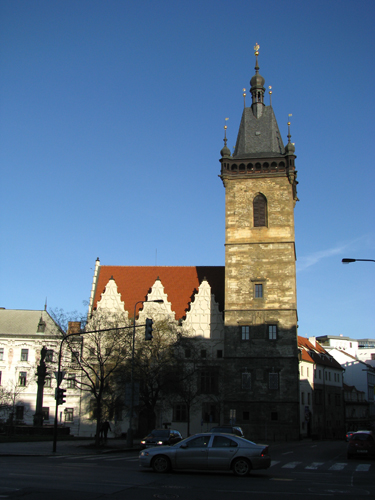 |
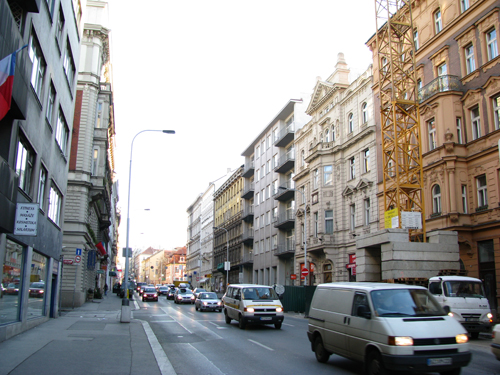 |
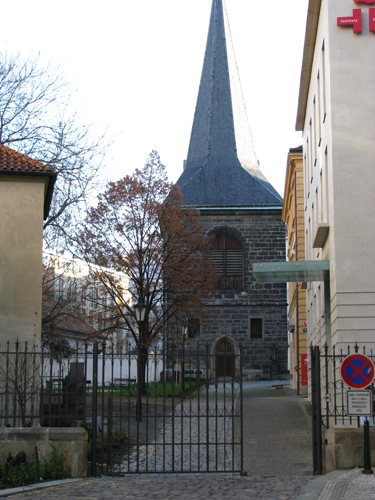 |
Namesti
Miru
|
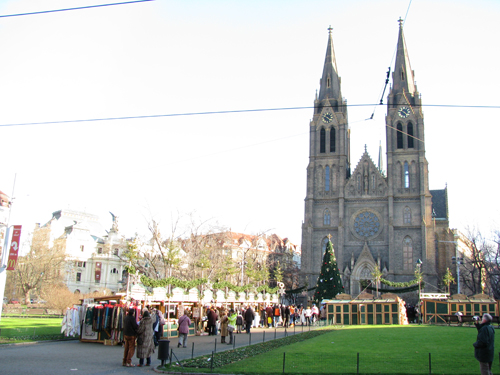
|
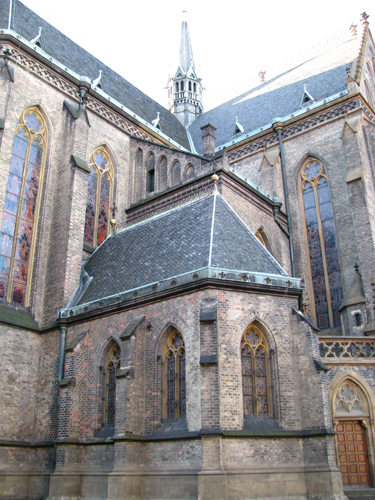 |
This
attractive square, with a well-kept central garden, is
the focal point of the Vinohrady quarter (on the eastern boarder of the
New Town). At the top of its sloping lawns stands the attractive,
brick neo-Gothic Church of St Ludmila (1888-93) (Above Left and Right),
designed by Josef
Mocker, architect of the west end of St Vitus's Cathedral. Its
twin
octagonal spires are 60m high. On the tympanum of the main portal
is a
relief of Christ with St Wenceslas and St Ludmila by the great
19th-century sculptor Josef Myslbeck. Leading artists also
contributed
designs for the stained glass windows and the colourful interior.
The
outside of the square is lined with attractive buildings, the most
conspicuous being the Vinohrady Theatre (Below Left), a spirited Art
Nouveau
building completed in 1907. The facade is crowned by two huge
winged
figures sculpted by Milan Havlicek, symbolizing Drama and Opera.
Since I was there at the beginning of December the Christmas markets
were in full swing, and this made up for the gardens being in
hibernation.
|
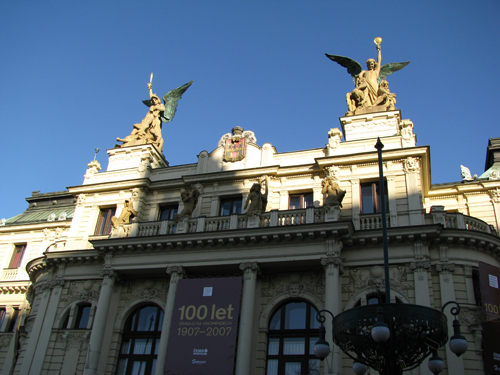 |
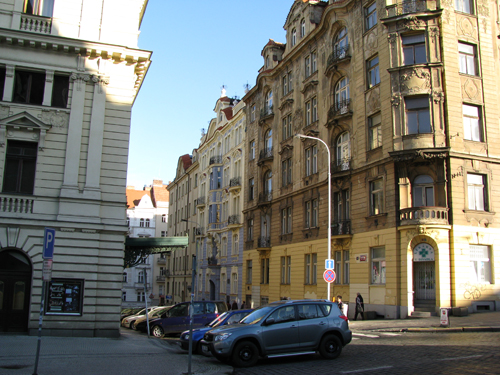 |
Walking
from Namesti Miru to the National Museum I passed some typical
buildings of the New Town, including this leftover from the soviet era.
|
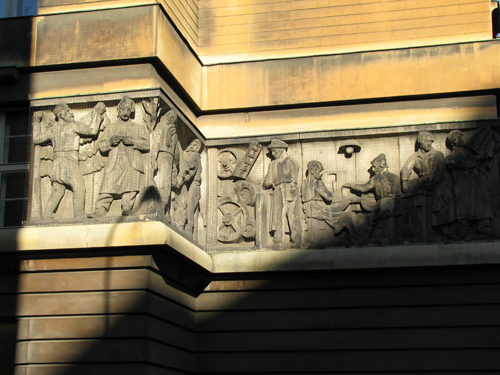 |
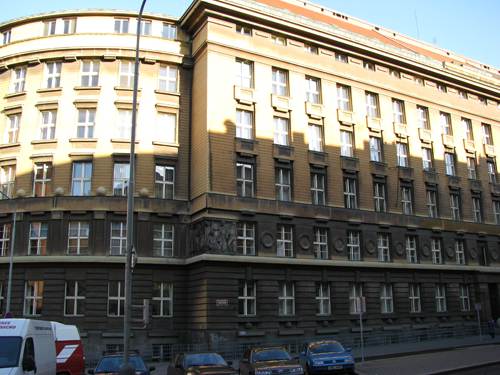 |
 |
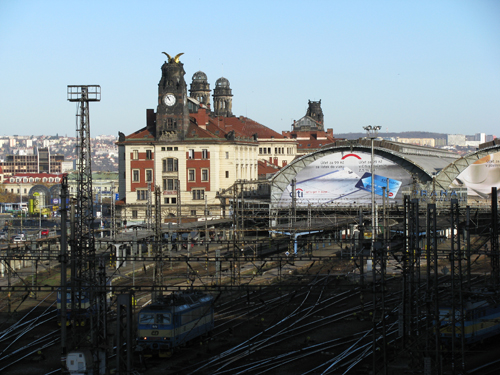
Central Train Station
|
National
Museum
|
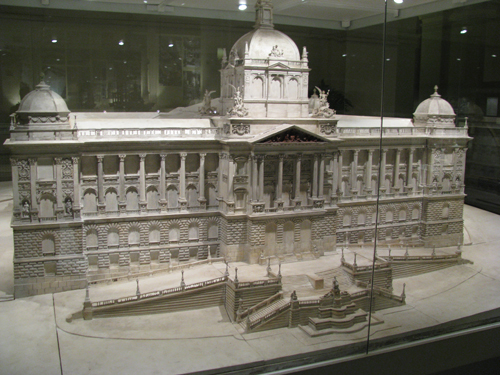 |
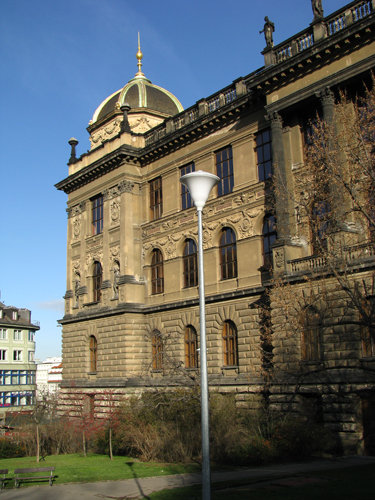 |
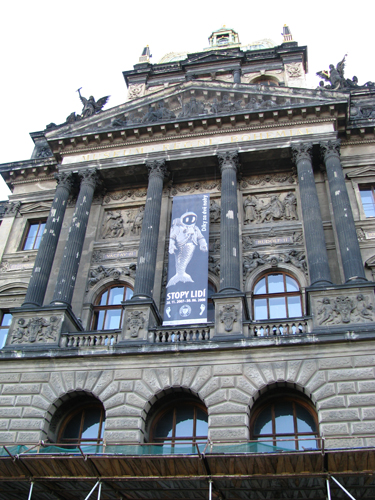 |
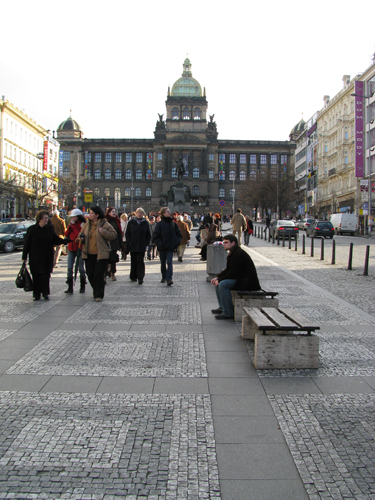 |
The vast
Neo-Renaissance building at the south end of Wenceslas Square houses
the National Museum. Designed by Josef Schulz as a triumphal
affirmation of the Czech national revival, the museum was completed in
1890. The entrance is reached by a ramp decorated with
allegorical statues. Seated by the door are History and Natural
History. Inside, the rich marbled decoration is impressive, but
overwhelms most of the collections devoted mainly to mineralogy,
archaeology, anthropology, numismatics and natural history. The
museum also has a Pantheon contain busts of statues of Czech scholars,
writers and artists. It is decorated with many painting by
Frantisek Zenisek, Vaclav Brozik and Vojtech Hynais. Inside and
out there are many statues adorning the museum.
|
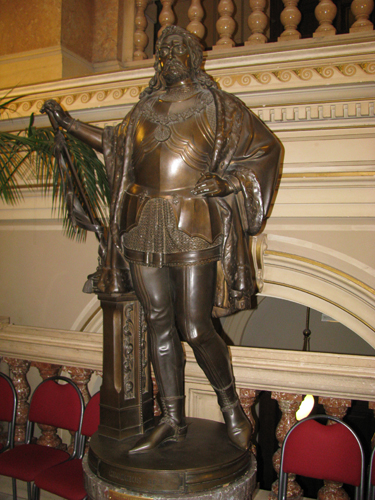 |
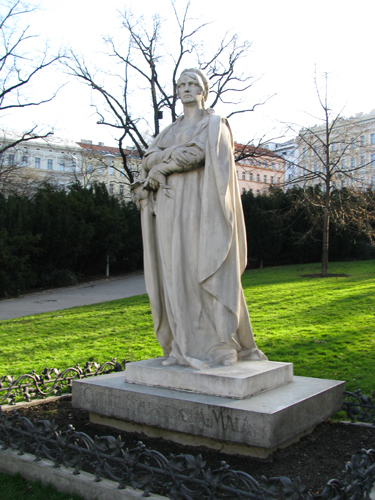 |
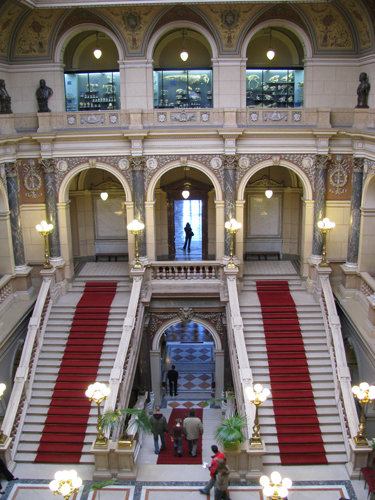 |
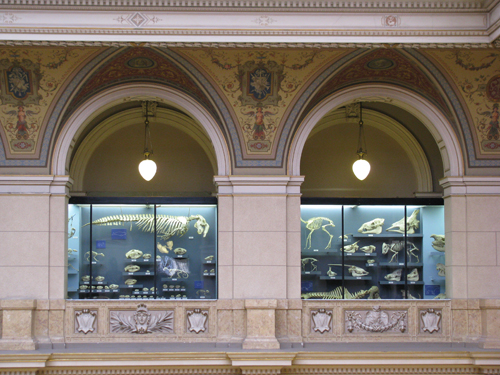 |
 |
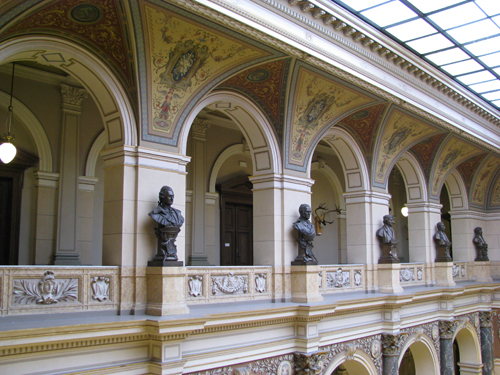 |
The central
hall with multiple staircases is sumptuous and everything one would
expect of a showpiece building. Through the vaults above the main
floor entrance arch you can see a sample of the animal skeletons on
display.
In the basement is a small cafe offers a wide variety of coffees and
an even wider variety of pastries served by a bevy of young women in
tight fitting uniforms. They speak broken English, but I had no
problems ordering and making myself understood. Unfortunately, no
is a word in their vocabulary.
|
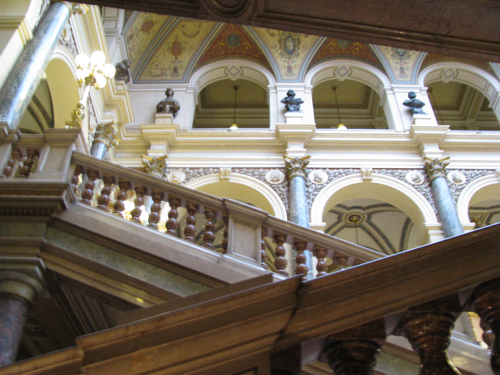 |
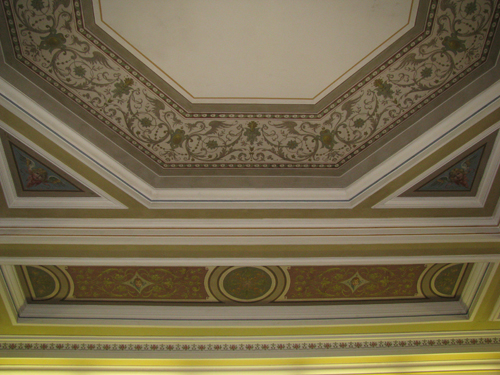 |
 |
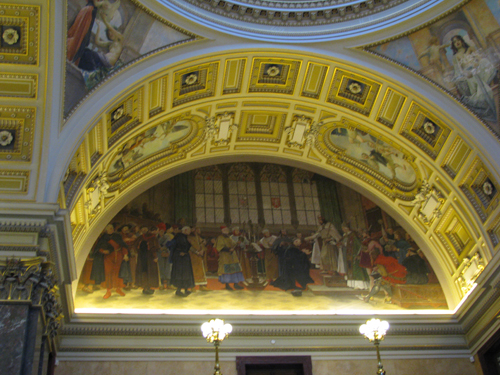 |
 |
At
either end of the first floor are large vaulted rooms which are, I
assume, used for receptions and other functions since, other than their
impressive architectural details and frescoes, they stand empty.
|
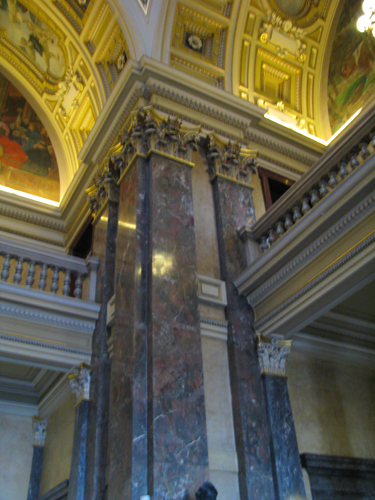 |
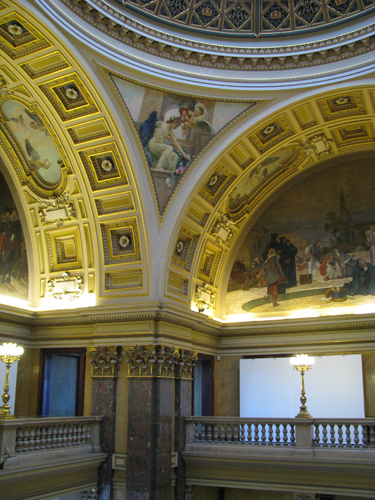 |
Their
collection of rocks and minerals is very impressive. It reminded
me of my first year engineering geology course. During the
examination for that course I was able to correctly identify 112
different rocks and minerals. Twenty years later I was able to
correctly identify about 16 rocks and minerals. Thank goodness
the
Czech names are generally very close to the English names.
|
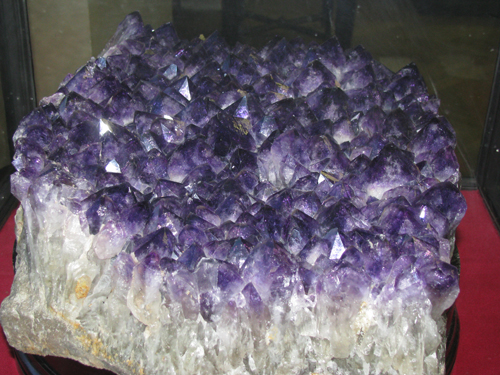 |
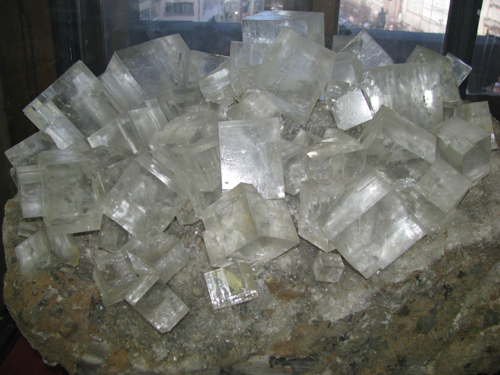 |
 |
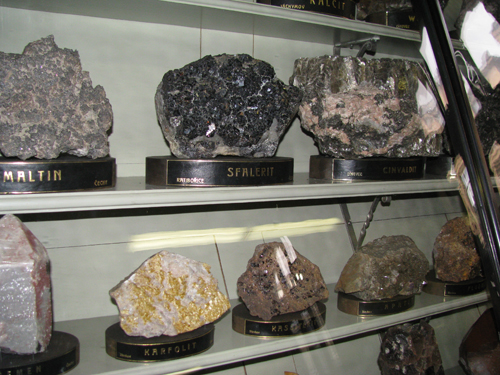 |
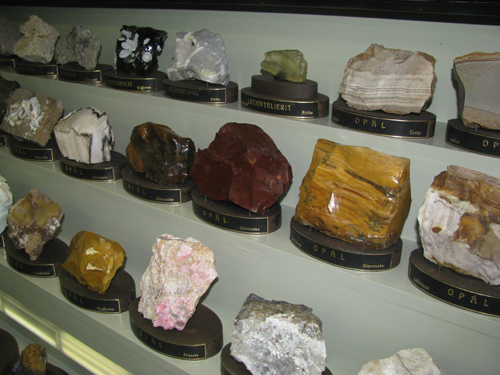 |
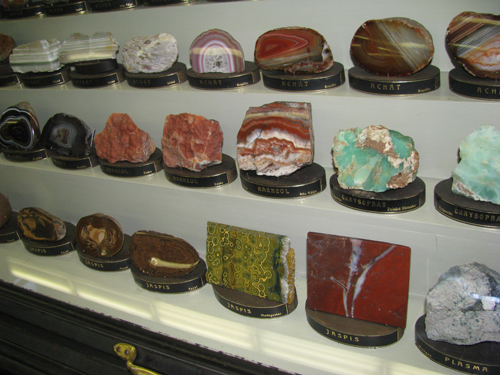 |
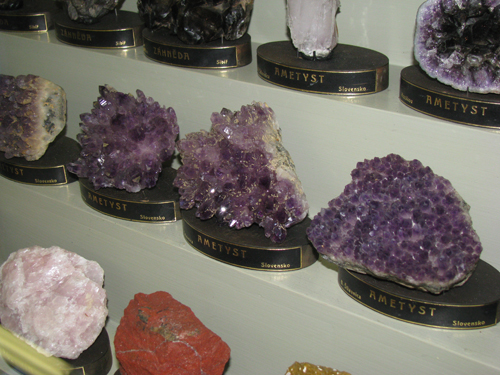 |
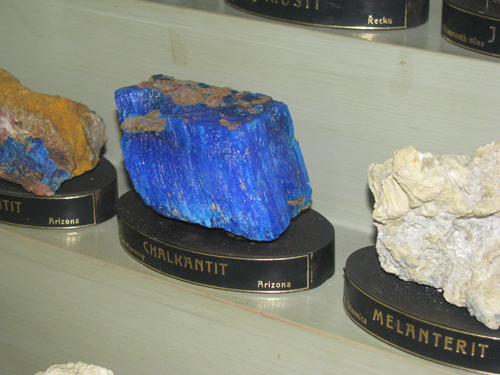 |
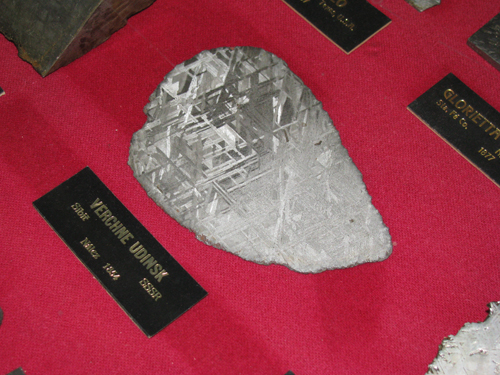 |
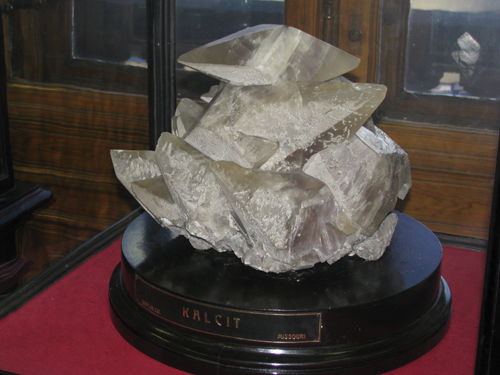 |
Not
surprisingly they have an extensive section dedicated to St Wenceslas
including several statues of him like the one below by Jan Brokof where
he is seen crushing grapes. Also included are a Pontifical
bishop set (including chasubles, dalmatica, mitre, shoes, gloves and
crosier) from the 19th century. They also display a donated
collection of orders and decorations from almost every European country.
|
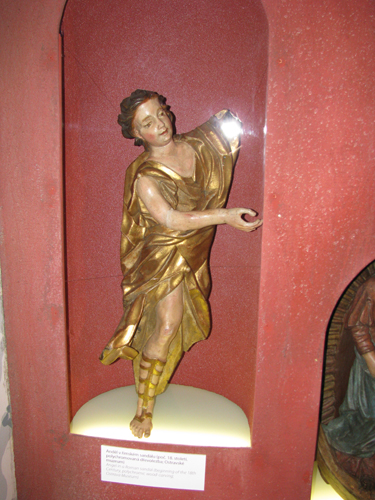 |
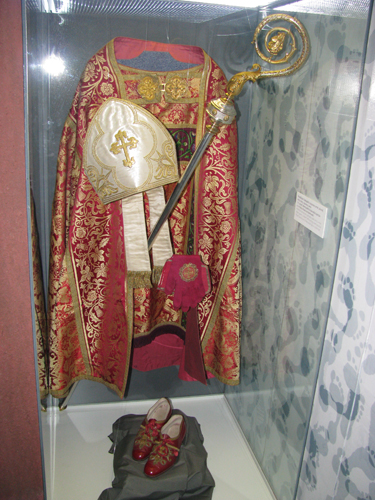 |
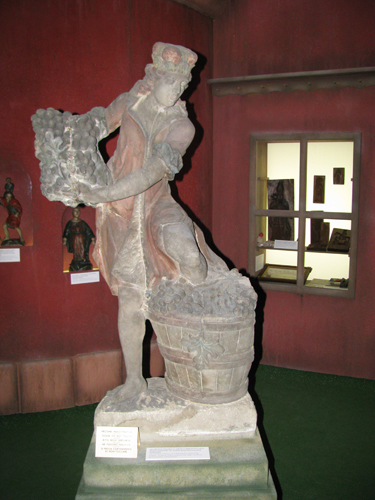 |
 |
Wenceslas
Square
|
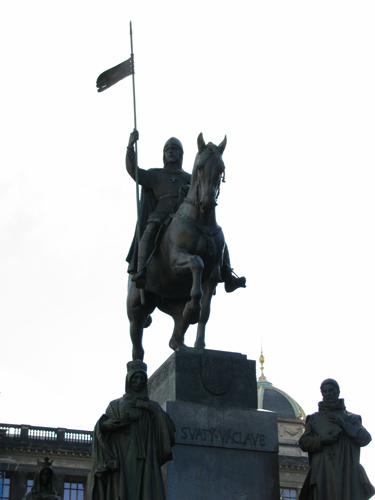 |
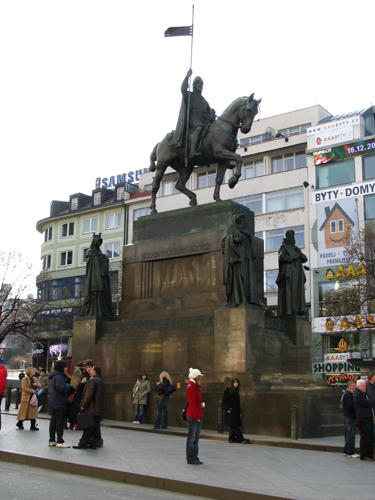 |
Wenceslas Square has witnessed
many key events in recent Czech history. It was here that the
student Jan Palach burnt himself to death in 1969, and in November 1989
a protest rally in the square against police brutality led to the
Velvet Revolution and the overthrow of Communism. Wenceslas
"Square" is something of a misnomer, for it is 750 m long and only 60 m
wide. Originally a medieval horse market, today it is lined with
hotels, restaurants clubs and shops reflecting the modern side of
global consumerism. The huge equestrian statue of St Wenceslas
that looks the length of the square from in front of the National
Museum was erected in 1912. Cast of bronze, it is the work of
Josef Myslbeck, the leading Czech sculptor of the late 19th
century. At the foot of the pedestal there are several other
statues of Czech patron saints. A memorial near the statue
commemorates the victims of the Communist regime. There are fine
examples of the decorative styles used by Czech architects of the turn
of the last century when the square was redeveloped. There are
also modern additions form this century and from the Soviet era.
While I was there there was also a large Christmas Market. I
bought a traditional spiral, deep fried pastry (how can you go wrong
with that), and an original watercolour of Charles Bridge which now
adorns my living room.
|
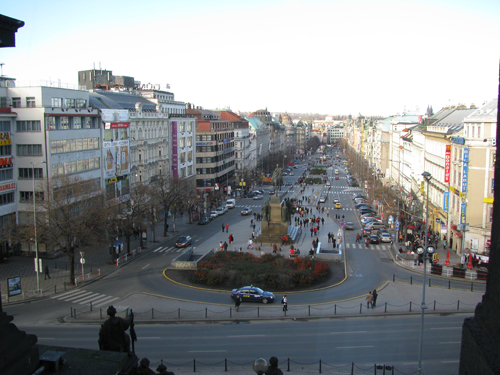 |
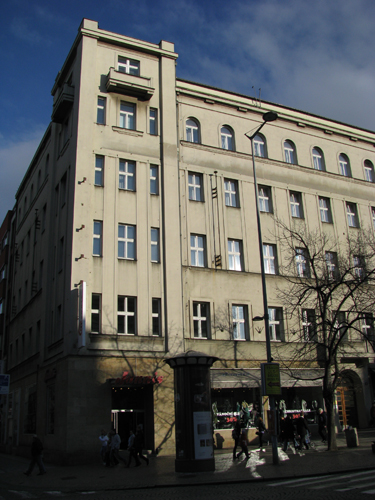 |
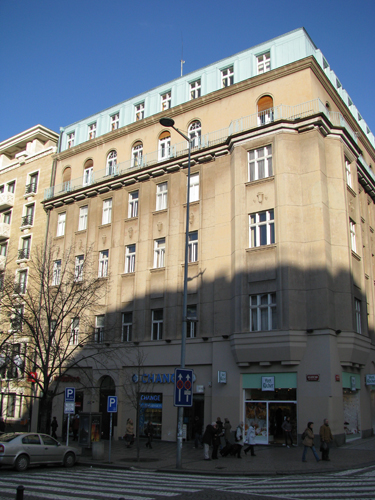 |
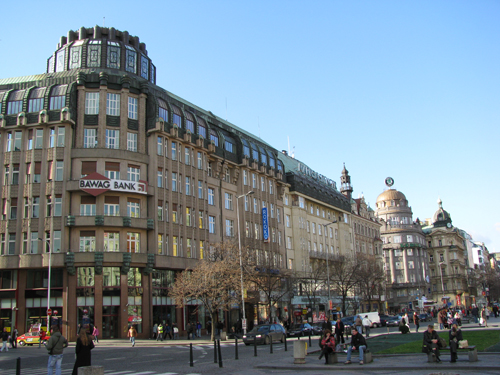 |
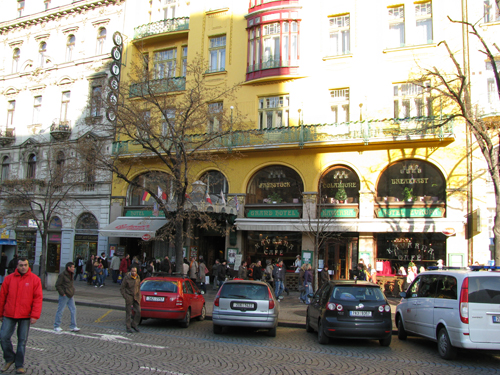 |
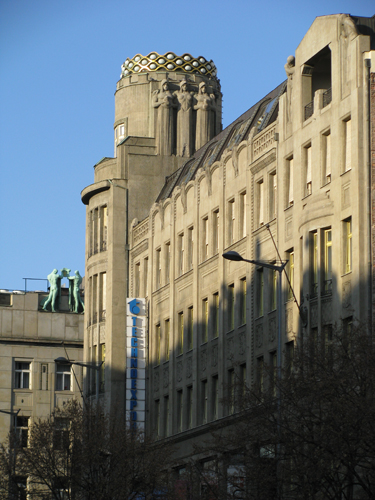 |
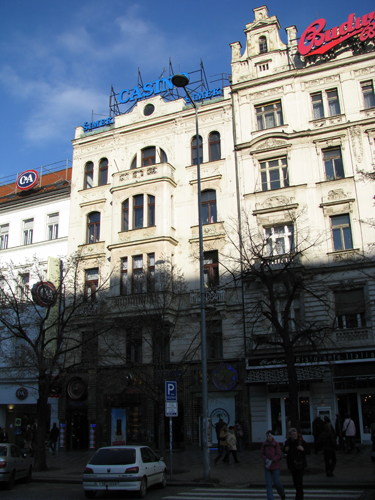 |
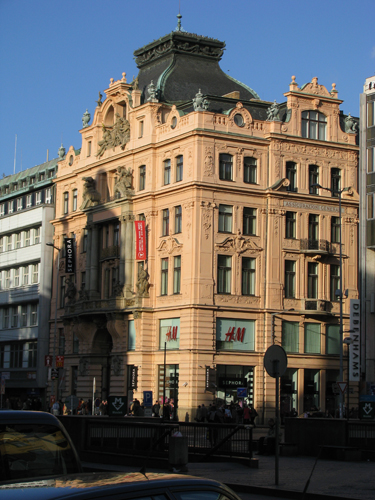 |
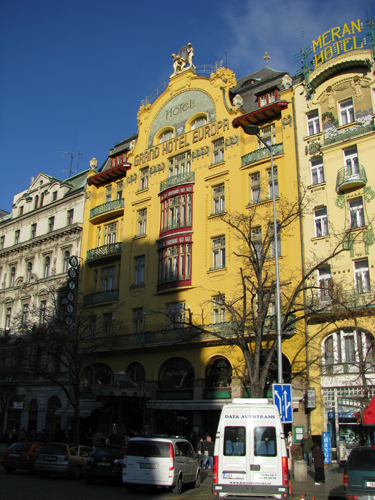 |
 |
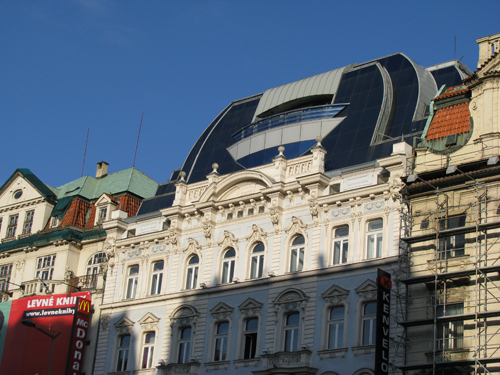 |
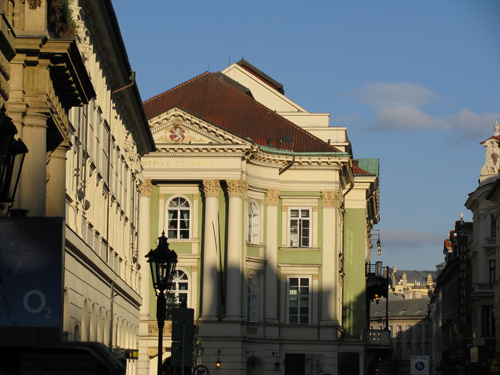 |
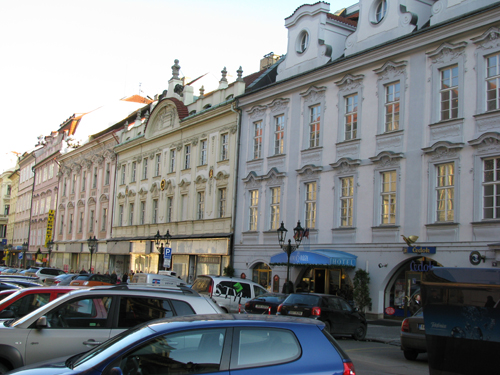 |
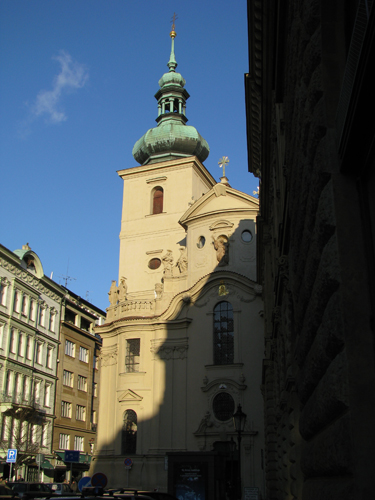 |
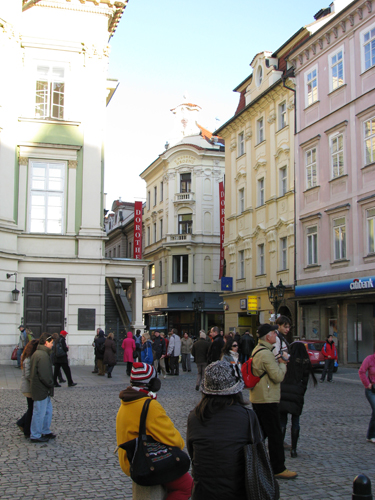 |
Along
the River
|
 |
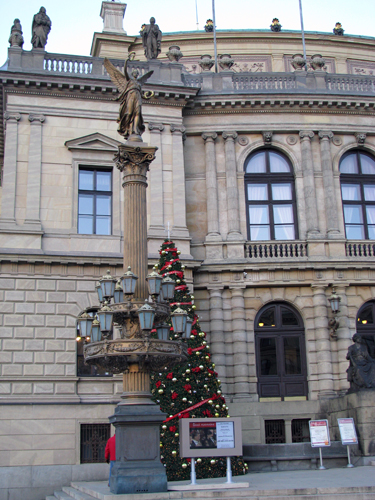 |
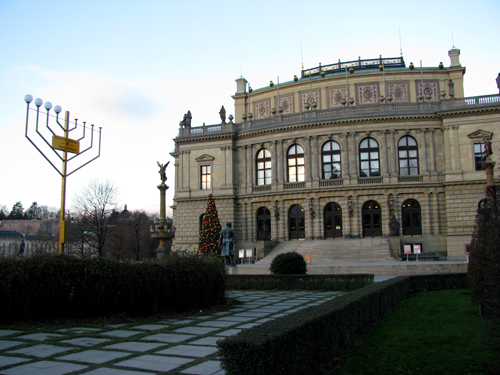 |
The gold-crested national
theatre has always been an important symbol of the Czech cultural
revival. work started in 1868, funded largely by voluntary
contributions. The original Neo-Renaissance design was by the
Czech architect Josef Zitek. After it burned down following the
first performance, Josef Schulz was given the job of rebuilding the
theatre and all the best Czech artists of the period contributed toward
its lavish and spectacular decoration. From 1978 to 1983 the
theatre was restored and the New Stage was build by architect Karel
Prager.
The Startling cobalt-blue rood is covered with stars, it is said, to
symbolize the summit all artists should aim for.
|
 |
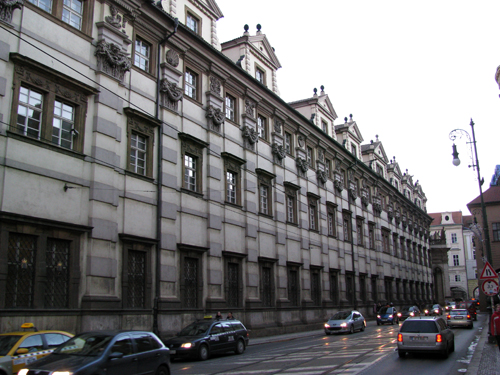 |
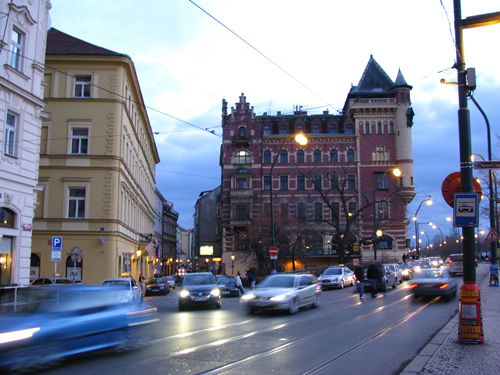 |
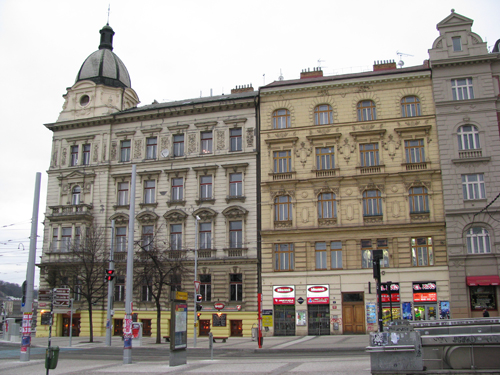 |
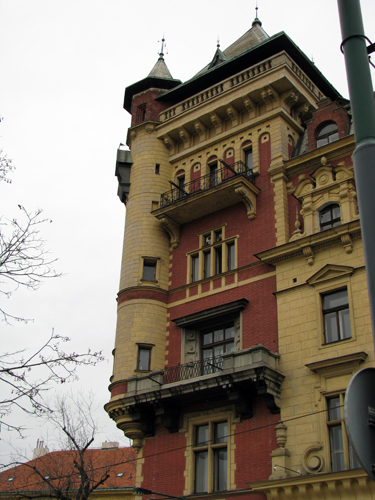 |
 |
 |
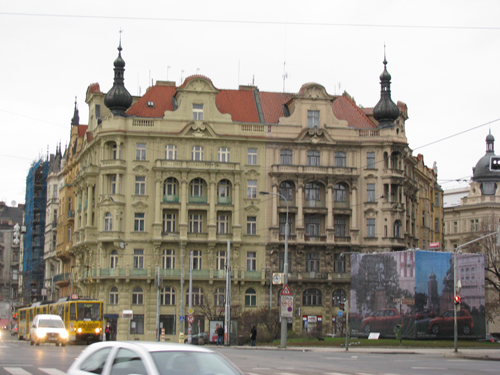 |
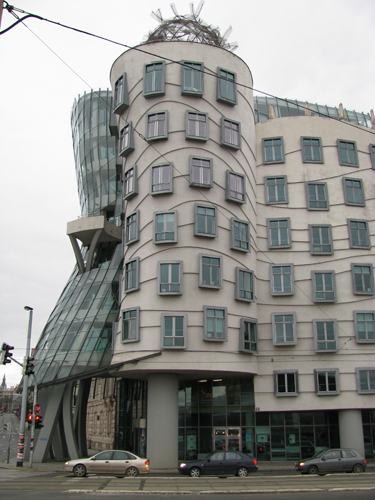 |
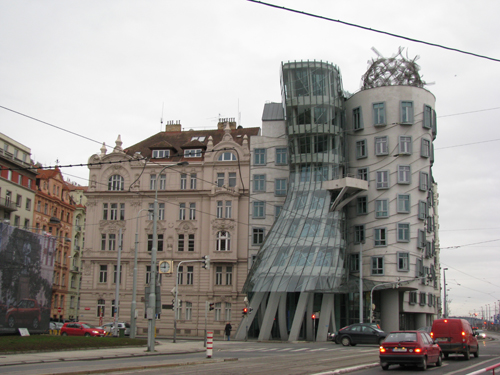 |
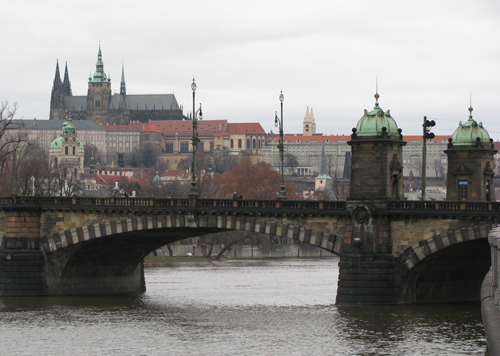 |
The Dancing House (Above) was
built between 1994 and 1996 and is considered one of the symbols of the
new Prague. Designed by the architects Frank O. Gehry and V.
Milunic, it was inspired by Fred Astaire and Ginger Rogers and is
known to the locals as "Fred and Ginger." It serves as an office
building and has impressive views of the river and Prague Castle.
|
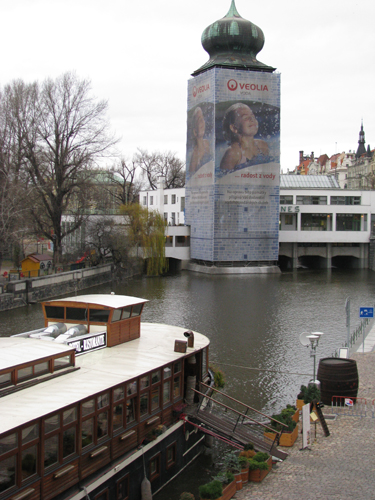 |
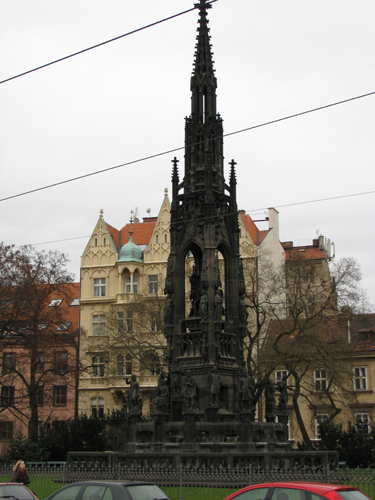 |
 |
At the river end of the street
that my hotel was on stand these two memorials. My Czech is
non-existent so I don't know what they are memorials for but the one
above was erected in the mid-17th century.
|